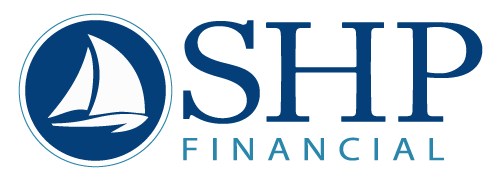
For many Americans, approaching 60 is exciting. It is full of planning for the next chapter in life, and using the wisdom gained over the years to do it. This period also marks a significant milestone in the journey toward retirement. For those turning 59 1/2, this age is the pivotal point where the usual financial restrictions and penalties on retirement account withdrawals no longer apply. With greater control and flexibility over retirement savings, turning 59 1/2 gives pre-retirees a lot to celebrate. Here’s a comprehensive look at what this age means for retirement and its implications for financial planning, investment strategies, and lifestyle choices.
Financial Implications
- Access to Retirement Accounts—Withdrawals from retirement accounts before age 59 1/2, including individual retirement accounts (IRAs) and 401(k)s, usually incur a 10% penalty and regular income tax owed on the distribution. A notable benefit of turning 59 1/2 is penalty-free access to qualified retirement accounts. This can provide financial relief to those who need additional income before retiring.
- Required Minimum Distributions (RMDs)—RMDs begin at age 73 (as of 2024 legislation), for most retirement accounts. It’s important for those who withdraw funds from their retirement savings at age 59 1/2 to understand the tax implications in planning for these mandatory distributions. Early access can allow investors to manage their taxable income through strategic withdrawals and potentially reduce the impact of RMDs later.
- Roth IRA Considerations—Investors can withdraw contributions from a Roth IRA penalty-free anytime, but the earnings on contributions are subject to certain conditions. For withdrawals of earnings to be tax-free, a Roth IRA holder must be 59 1/2 or older and have had the account for at least five years.
Retirement Investment Strategies
- Rethink 401(k) and IRA—For retirees, a 401(k) and IRA may be key sources of income. Reaching the no-penalty withdrawal age of 59 1/2 does not require investors to withdraw from these accounts, especially if they are still working and earning. However, this could be a good time to consolidate and roll over a 401(k) into an IRA. One of the drawbacks to 401(k) accounts is their limited investment options.Rolling over some or all of a 401(k) into an IRA simplifies finances and typically allows for more investment options.[3] This enables the account holder to further customize their account strategy based on their objectives. A financial advisor can help investors identify the best course of action regarding their 401(k) and IRA funds.
- Reassess Asset Allocation—Age 59 1/2 is also an opportune time to revisit one’s investment strategy and risk tolerance. As retirement draws near, a prudent shift toward a more conservative portfolio can protect hard-earned savings. Typically, this involves reducing high-risk investments and aligning your portfolio with your time horizon and goals. The goal is to shield the nest egg from market downturns while generating enough income to support a comfortable retirement lifestyle.
- Draw Down Investments—The practice of drawing down investments involves careful decision-making about which accounts to draw from first, balancing tax implications, and ensuring that funds last throughout retirement. Financial advisors usually recommend a strategy that considers taxes and maximizes portfolio longevity.
- Catch-Up Contributions—Eligibility for catch-up contributions to 401(k) and IRAs begins at age 50, and participants should take advantage of them then and in subsequent years. Catch-up contributions allow individuals to exceed the annual limits on funds deposited into retirement accounts. Participants aged 50 and above can contribute an additional $7,500 for defined contribution plans and $3,500 for SIMPLE plans. This includes 401(k), 403(b), most 457 plans, and the federal government’s Thrift Savings Plan. Catch-up contributions for IRAs in 2024 are $1,000 increasing the total contribution limit to $8,000. Catch-up contributions give participants more money in retirement, so if it’s financially feasible, it is something worth considering.
Turning 59 1/2 is a significant point on the retirement roadmap. With the ability to access retirement accounts penalty-free, investors gain greater financial flexibility and strategic planning opportunities. A financial advisor can help clients understand the implications of gaining early access to their savings and reassess their investment strategies to make informed decisions and enhance their retirement readiness and security. Click HERE for a complimentary review of your finances with SHP Financial and gain valuable insights from one of our advisors.
Sources
[1] https://smartasset.com/retirement/what-are-401k-fees





